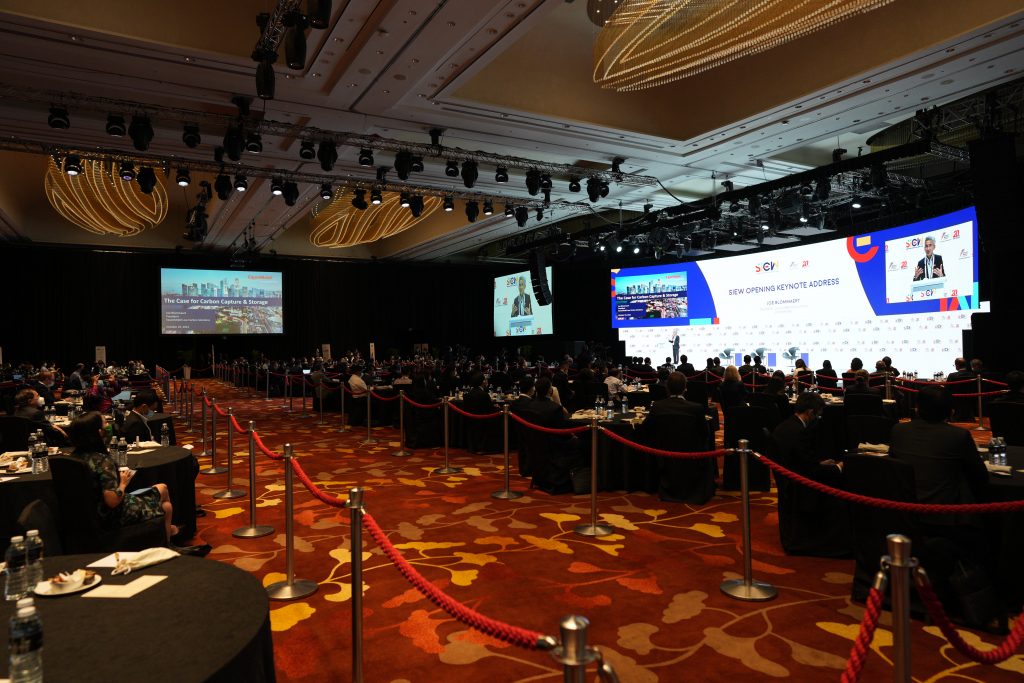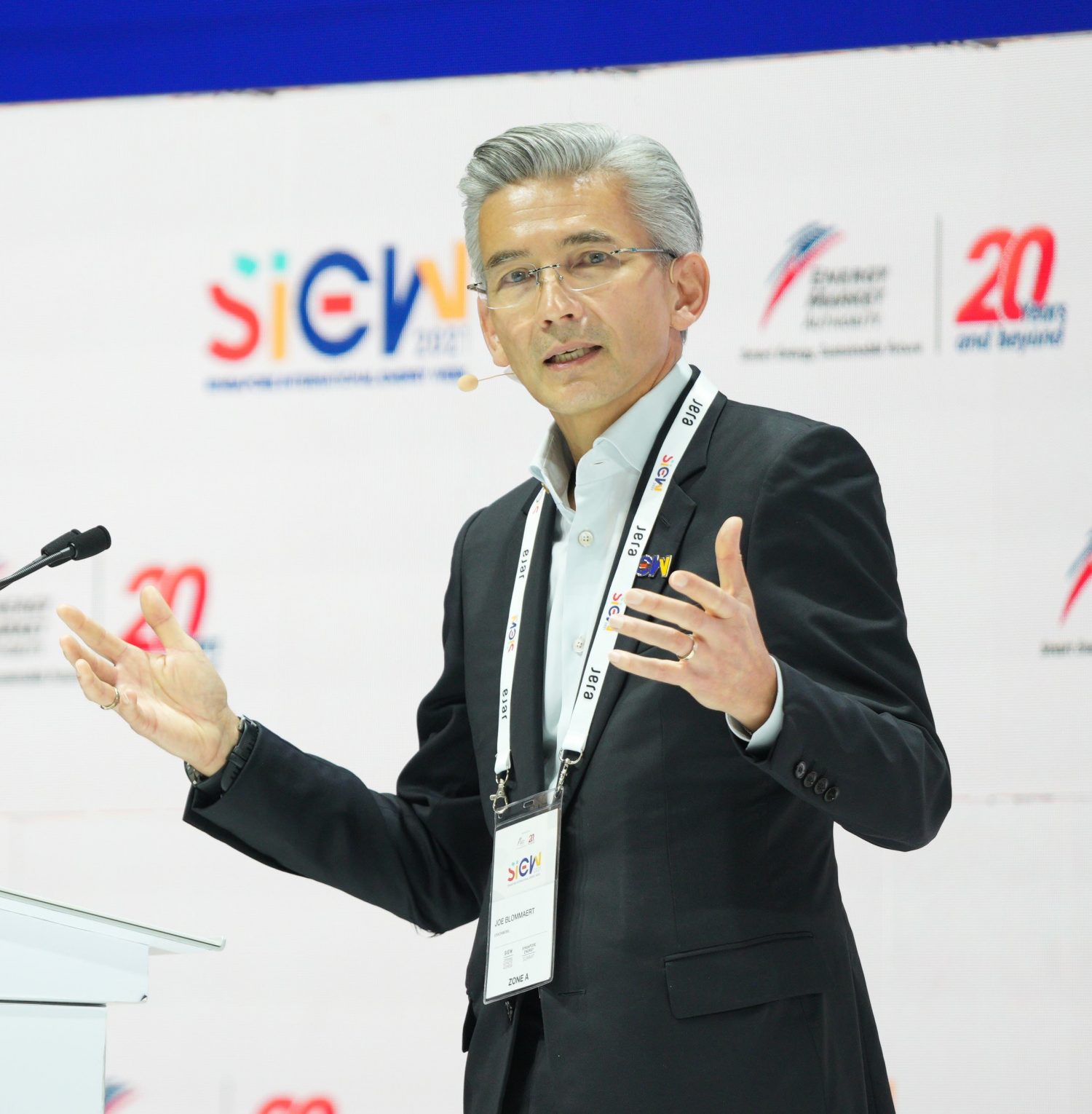Delivering one of the key note addresses on the conference’s opening day, Joe Blommaert, president of ExxonMobil Low Carbon Solutions, outlined how technology and collaborative approaches could help reduce emissions and achieve the Paris Agreement goals, even as the world – in particular, Asia Pacific – increases its energy use and demand for products that support modern life.
He said that Asia has an opportunity to be a model for carbon capture and storage by developing hubs that could help reduce industrial CO2 emissions in this region, which the International Energy Agency says exceeded 4 billion tonnes in 2019.

Joe Blommaert discussed the CCS opportunity for Asia on the opening day of the Singapore International Energy Week’s opening address hybrid virtual/in-person event. Credit: SIEW
“This would create a regional network that would connect high-emitting industries to world-scale storage,” Blommaert said.
“We all want to see a world with fewer CO2 emissions,” he said, “The fastest way to get there is to focus on where the majority of emissions come from and that’s industry and power generation.
“I believe such a network, with the potential for many users, could have a significant impact on regional emissions and be a model for other parts of the world.”
This model is supported by a recent study from the Singapore Energy Centre that estimated there are nearly 300 billion tonnes of storage capacity in South East Asia.
“That’s why we’ve been studying the concept of placing CO2 capture hubs in some of South East Asia’s heavy industrial areas, and then connecting them to CO2 storage sites elsewhere in the region,” he said.
Similar large-scale carbon capture and storage projects are under development around the world. In the United States, ExxonMobil is one of 11 companies to have recently expressed support for advancing the technology in Houston, with the potential to capture and permanently store about 100 million tonnes of CO2 annually by 2040.
One hundred million tonnes is equal to the amount of CO2 sequestered by about 120 million acres of forest, or, Blommaert explained, “about one-and-a-half times the size of Malaysia.”
“There’s tremendous opportunity here in Asia, but Asia will need a different model,” he added.
Collaborating for low-carbon solutions
Blommaert said low-carbon technologies have the potential to curb emissions from a rising global population.
CCS is particularly exciting because with the appropriate government policies in place, it can be deployed today.
“With the world population expected to grow to more than 9 billion people by 2050, we’re going to be using more of the products [that come from energy-intensive manufacturing processes], not less,” he stated.

Demand is rising for energy around the world.
“Carbon capture and sequestration can help significantly reduce the emissions that result from making them … and it can do so now.”
Blommaert said a collaborative approach is critical to achieving this goal, and interaction between nations and industry is key for tangible emissions-reduction opportunities.
“Climate change doesn’t stop at country borders, so it’s important that we all work together, he said.
“No one company, no one country can do this alone. It’s going to take collaboration with industry and governments; private sector and government investment; new policies and regulations; and community support.”
*Feature image courtesy of SIEW.




